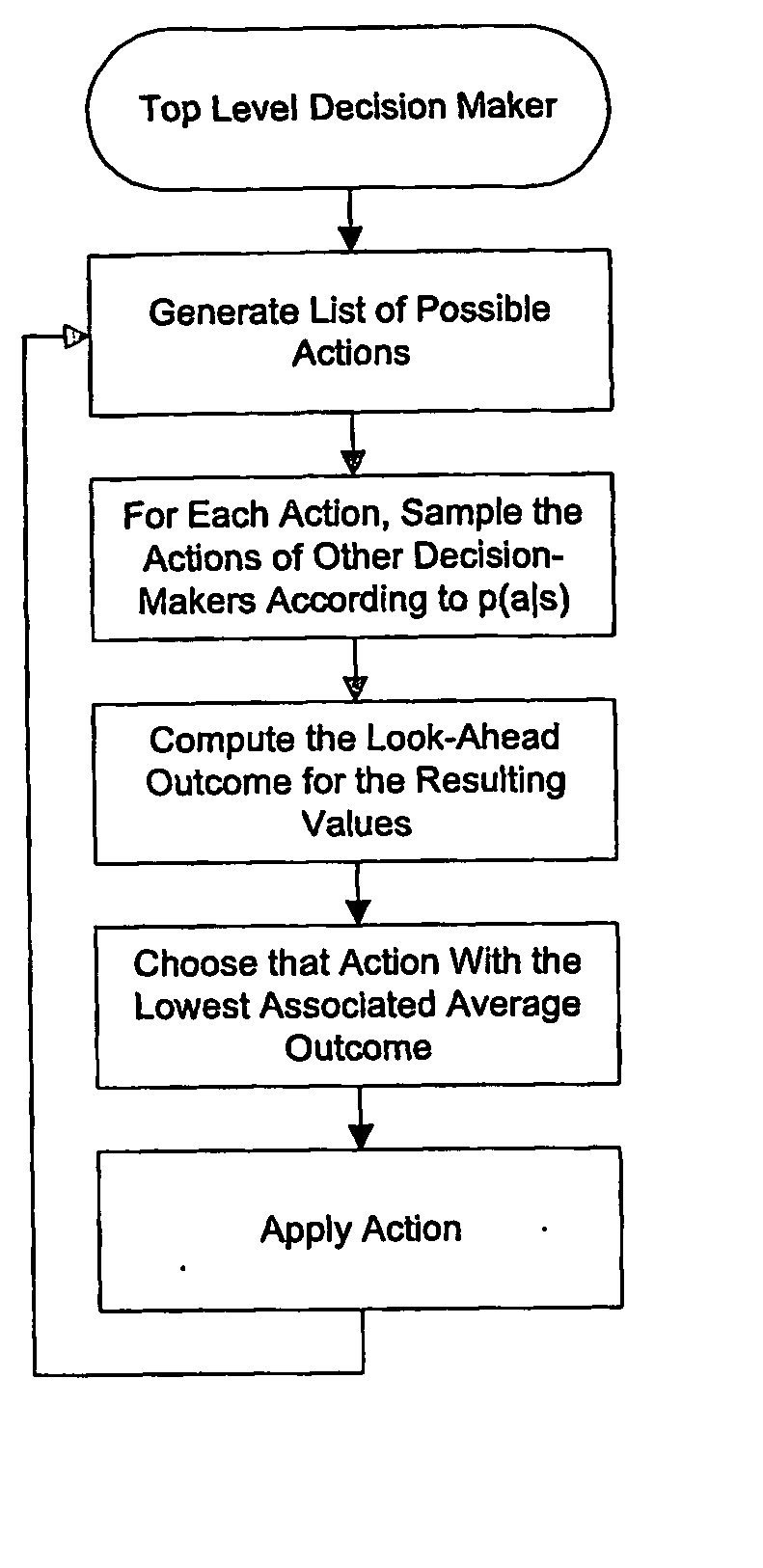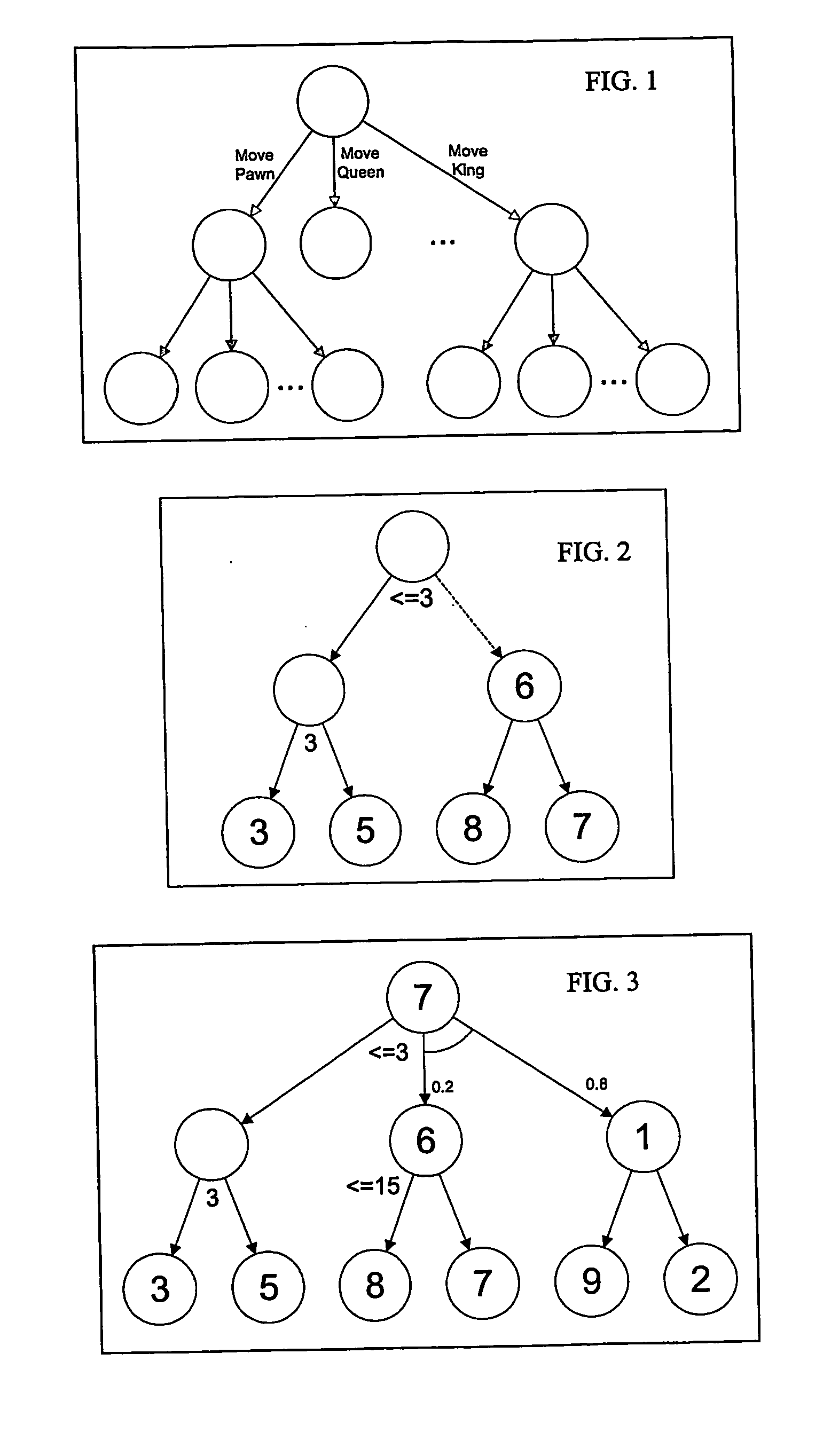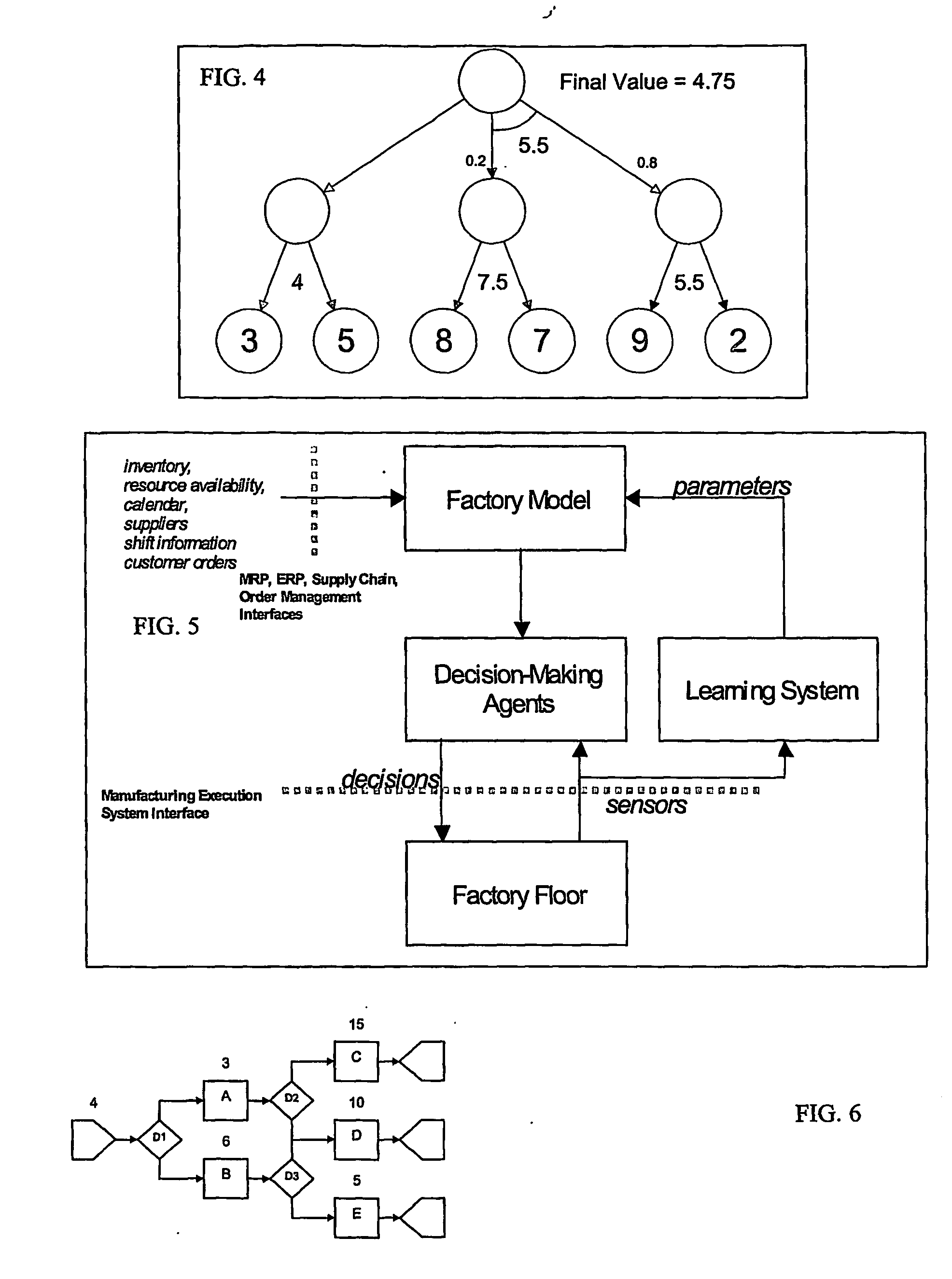Optimizing active decision making using simulated decision making
a decision-making and simulated technology, applied in the field of decision-making, can solve the problems of inability to compute the actual outcome for a given position, inability to prune in real time, and inability to achieve real-time pruning, so as to speed up the effect of performance improvemen
- Summary
- Abstract
- Description
- Claims
- Application Information
AI Technical Summary
Benefits of technology
Problems solved by technology
Method used
Image
Examples
Embodiment Construction
[0047] We will now detail an exemplary embodiment, called Simulation-Based Real-Time Decision-Making (SRDM), of the invention. One skilled in the art, given the description herein, will recognize the utility of the system of the present invention in a variety of contexts in which decision making problems exist. For example, it is conceivable that the system of the present invention may be adapted to decision making domains existent in organizations engaged in activities such as telecommunications, power generation, traffic management, medical resource management, transportation dispatching, emergency services dispatching, inventory management, logistics, and others. However, for ease of description, as well as for purposes of illustration, the present invention primarily will be described in the context of a factory environment with manufacturing activities.
[0048]FIG. 5 shows our system architecture for real-time factory-floor decision-making. The Factory Model consists of informat...
PUM
 Login to View More
Login to View More Abstract
Description
Claims
Application Information
 Login to View More
Login to View More - R&D
- Intellectual Property
- Life Sciences
- Materials
- Tech Scout
- Unparalleled Data Quality
- Higher Quality Content
- 60% Fewer Hallucinations
Browse by: Latest US Patents, China's latest patents, Technical Efficacy Thesaurus, Application Domain, Technology Topic, Popular Technical Reports.
© 2025 PatSnap. All rights reserved.Legal|Privacy policy|Modern Slavery Act Transparency Statement|Sitemap|About US| Contact US: help@patsnap.com



